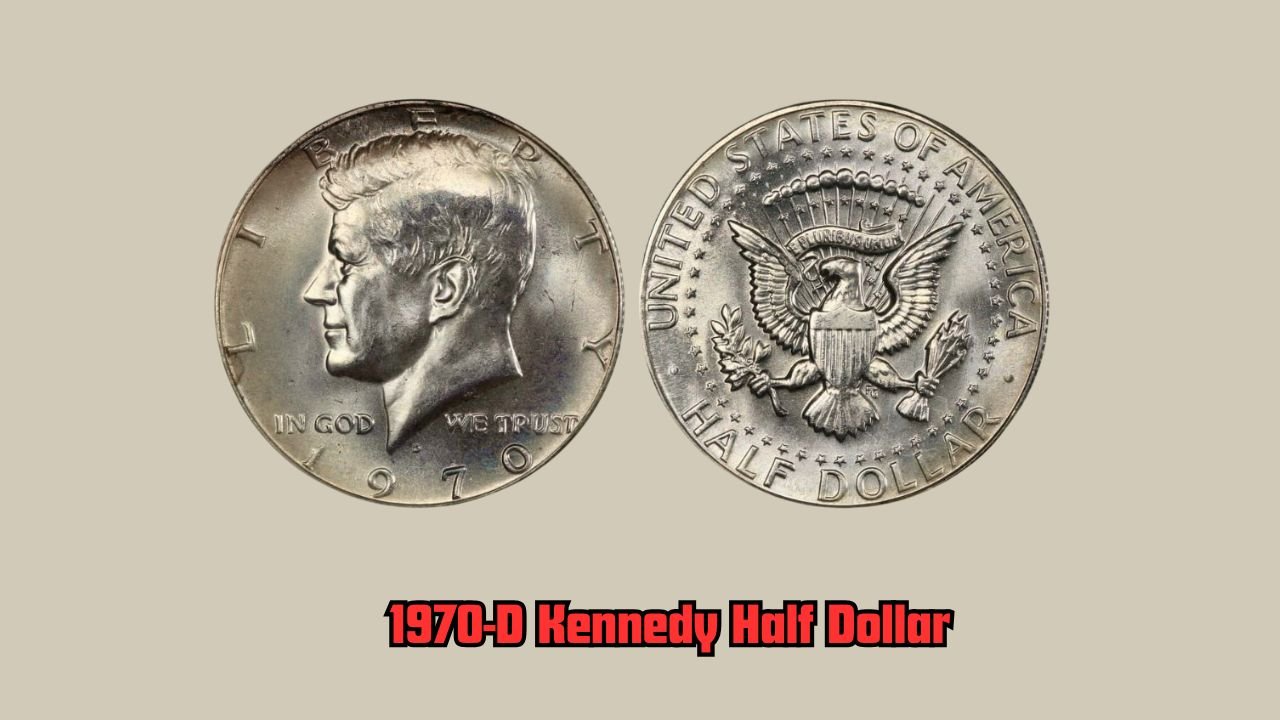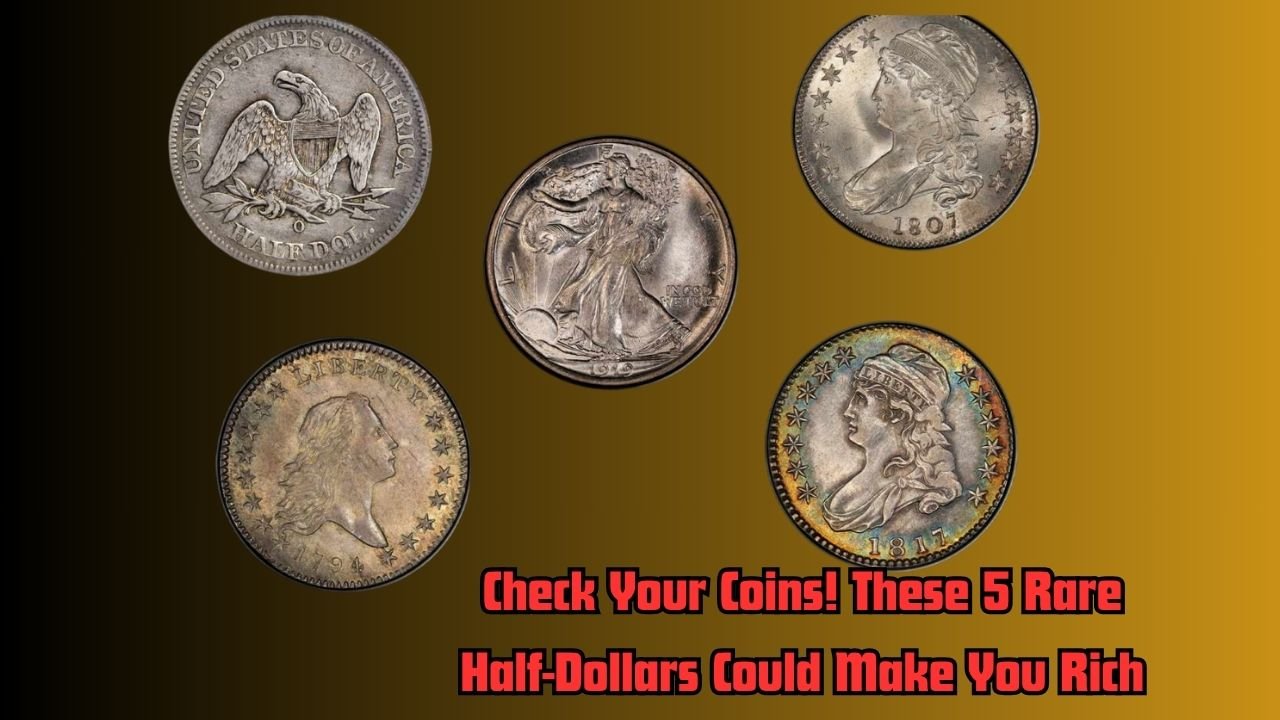Are you one of those who mindlessly drop spare change into a jar? Better check your potato sack, as some of the coins you have might just be half-dollars. Some of these seemingly ordinary-looking coins can fetch prices of hundreds, even thousands of dollars, from collectors.
Whether you are a novice or an expert, the only way to make a dime and change into real treasure is to find out about these rare half-dollars.
Here below, we have highlighted 5 rare half-dollar coins you ought to watch for and what makes each of them so valuable.
1964 Kennedy Half-Dollar (90% Silver)
The Kennedy half-dollar was minted for the first time in 1964, in the wake of President John F. Kennedy’s assassination. Especially valuable in the first year of issue are the issues due to their silver content and historical significance.
- Metal composition: 90% silver, 10% copper
- Weight: 12.5 grams
- Value: $10–$100+ dependent on condition and mint mark
Why It’s Valuable:
Higher-priced versions are very much sought in their uncirculated or proof condition because these coins were struck well before the discontinuation of silver from circulating coins in the United States and hence have value for their silver content and historical significance.
1970-D Kennedy Half Dollar
Considered a key-date series coin, the 1970-D (Denver) Kennedy Half Dollar enjoyed limited production and was only released for collectors.
- Metal Composition: 40% silver
- Minted: Only in Mint Sets; never released into circulation
- Value: $30 to $300+
Why It Has Value:
It had never been issued for general circulation, hence obtaining a piece in common change is ultra-rare. A low mintage of about 2.1 million specimens makes it a highly sought-after coin among collectors. Should you purchase one on the shortlist, count yourself very lucky!

1967 Kennedy Half – Dollars (SMS – Special Mint Set Variety)
Although half dollars in 1967 were much sent, Special Mint Set (SMS) can be much higher with high levels of variants and Camio contrasts.
- Metal composition: 40% silver
- Price: $ 10- $ 1000+ (based on grade and como features)
Why it’s valuable:
Special coin sets were produced with better striking techniques. Coins such as deep or strong mirrors can sell for hundreds or thousands of dollars when classified by professional coin services.
1995 Kennedy Half-Dollar (Double Die Obverse)
The 1995 Kennedy half-dollar with a doubled-die obverse (DDO) is an extraordinary errors coin that collectors like to chase.
- Metal Composition: Copper-Nickel Clad
- Value: $50–$200
Why It’s Valuable:
Error cash just like the DDO are famous due to the fact they are unique errors during minting. On this coin, you can notice doubling in the phrases “In God We Trust” and “Liberty.” It’s a subtle however great difference which can force up its value.
1942 Walking Liberty Half-Dollar
Before the Kennedy half-dollar, the Walking Liberty design (1916–1947) graced the 50-cent piece. These cash are loved for their beauty and collectibility, particularly older dates like 1942.
- Metal Composition: 90% silver
- Value: $15–$500 (depending on condition and mint mark)
Why It’s Valuable:
High-grade examples with sharp details, in particular from the San Francisco Mint (marked with “S”), can fetch top rate charges. These cash also have intrinsic cost because of their silver content.

How to Check If Your Half-Dollars Are Valuable
Now which you recognize which half-dollar cash to search for, right here are some brief recommendations on how to test them:
Inspect Mint Marks
Look for small letters like “D” (Denver), “S” (San Francisco), or “P” (Philadelphia). They’re typically positioned at the obverse or reverse, relying on the yr.
Check the Date
Coins minted earlier than 1971 are much more likely to incorporate silver and have collectible fee.
Look for Errors
Misprints, doubling, off-middle strikes, and lacking elements can substantially growth a coin’s fee.
Use a Magnifying Glass
Some info, like doubled-die errors or minting flaws, require near inspection.
Weigh Your Coin
A kitchen scale can help identify silver content material — silver cash tend to weigh more than modern-day clad variations.
Where to Sell Rare Half-Dollars
If you suspect you’ve struck it wealthy, here are some locations to get your coins appraised or offered:
- Local coin sellers
- Online public sale web sites (like eBay or Heritage Auctions)
- Certified grading offerings (e.G., PCGS, NGC)
- Coin suggests or coin golf equipment
Make positive to get more than one evaluations earlier than you promote — especially for cash that might be worth masses or heaps of dollars.
Tips for Storing Valuable Coins
- If you plan to hold on to your cash, proper storage is important:
- Use acid-free holders or coin flips to save you tarnishing.
- Avoid cleaning your coins — this may decrease their value.
- Keep them in a fab, dry area far from sunlight and moisture.
Conclusion:
It’s brilliant to assume that some thing as simple as a half of-dollar coin on your pocket will be well worth loads — or even heaps — of greenbacks. Whether you’re preserving a silver-rich Kennedy half of-greenback from 1964, an extraordinary 1970-D edition, or an unnoticed error coin, your spare exchange might be greater valuable than you watched.
So pass ahead: test your coins. That forgotten jar of alternate might be hiding a small fortune.
FAQS:
Are all half of-dollar cash precious?
Not always. Most post-1971 1/2-bucks are manufactured from base metal and are really worth face fee until they have mistakes or unique mint marks.
How do I recognize if my coin has silver?
Half-bucks minted before 1971 regularly comprise silver. The 1964 coins have 90% silver; 1965–1970 cash have forty% silver. You can also test by using weight and sound.
Should I clean my antique coins?
No! Cleaning cash can scratch them and decrease their value. Collectors choose unique, unaltered surfaces.
Can I still find treasured coins in circulation?
Yes, though uncommon, people now and again find old or error cash in stream or coin rolls from banks.
What’s the satisfactory manner to get a coin graded?
Use expert services like PCGS (Professional Coin Grading Service) or NGC (Numismatic Guaranty Corporation) to get an authentic, marketplace-diagnosed grade.
